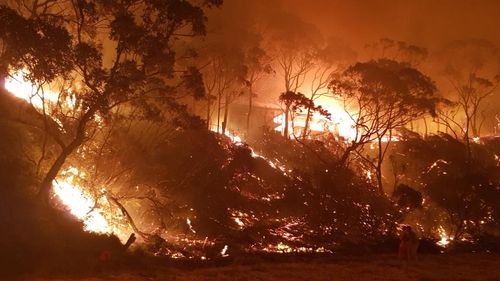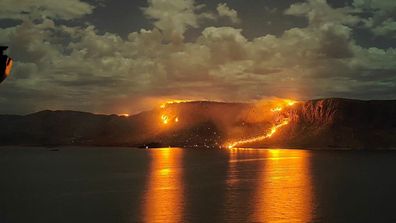The Australian Fire Authorities Council has released its seasonal bushfire outlook for spring.
It warns that the climate has shifted “significantly” since last spring, with the Bureau of Meteorology predicting above-average temperatures and below-average rainfall.

But heavier rain in recent years has contributed to increased fuel growth around the country.
For spring 2023, the report identified an increased risk of bushfire for large areas of the Northern Territory, Queensland and New South Wales, as well as regions in Victoria and South Australia.
“Almost the entire country can expect drier and warmer conditions than normal this spring, so it is important for Australians be alert to local risks of bushfire over the coming months, regardless of their location,” AFAC CEO Rob Webb said.

“Fire is a regular part of the Australian landscape in spring. Wherever you live, work or travel, now is the time to plan and prepare.
“Understand your risk, know where you will get your information, and talk to your family about what you will do.”
State and territory fire authorities will continue to monitor local conditions closely and undertake bushfire mitigation activities where possible, AFAC said.

WA burn off creates captivating image
Large areas of central and northern NSW are expected to see an increased risk of fire in spring 2023.
Hazard reduction burns will be undertaken where permitted.
AFAC warns that regions hit by the Black Summer fires in 2019-20 have seen fuel regrowth, while there are high grass loads in the state’s north.
High forest fuel loads are also evident in parts of the coast and ranges not affected by the 2019-20 fires.
These are particularly noticeable around the Sydney Basin, parts of the coast and north of the Hunter, AFAC said.
Victoria can expect a warmer spring and earlier start to the high-risk fire season this year, following three years of lower fire-risk seasons as a result of La Niña conditions.
There is a high likelihood that the bushfire season of 2023-24 will commence earlier across much of central, western and northern Victoria.
People are urged to make a fire plan.
The combination of drying fuels, forecast below-average rainfall and above-average temperatures is likely to bring “locally intense” bushfire activity.
Read Related Also: Washington postal worker attributes $717K lotto win to kitten rescue
Bushfires may be destructive across parts of Queensland as vegetation becomes flammable during the spring months.
Above-average rainfall has rapidly switched to below-average rainfall and drying out of soil in many areas of the state.
Much greater fuel loads are present, requiring greater efforts for hazard reduction throughout spring before the hotter weather arrives.
SA is expecting well above-average maximum temperatures and above-average minimum temperatures in spring.
Winter rainfall has been below average for southern WA and above average for northern WA.
An above-average wet season in the Kimberley has delayed curing in the savanna grassland and subsequently the late dry season.
For southern WA in late spring, drier and warmer conditions may contribute to higher surface fuel availability and make bushfires more difficult to suppress.
Normal bushfire risk is predicted for spring in Tasmania.
Drier and warmer conditions, and an abundance of fuel will see bushfire risk increase towards summer.
Property owners are advised to prepare now.
Drying conditions are predicted to impact the entire NT as El Niño continues to develop.
Average grass fuel loads and adequate fire scar coverage across the Top End, Katherine and Arnhem districts mean there is normal fire potential for these regions.
Above-average grass fuel loads, continuity of these fuels and high densities of invasive buffelgrass have increased the risk for wildfires to travel across vast distances during spring.
Australian Capital Territory
A normal bushfire risk during spring is expected for the ACT.
The long-range outlook for spring predicts drier and warmer conditions, raising the possibility of increased bush and grass fire risks for summer.
Fire agencies and land managers will conduct prescribed burning during spring to mitigate potential hazards.





